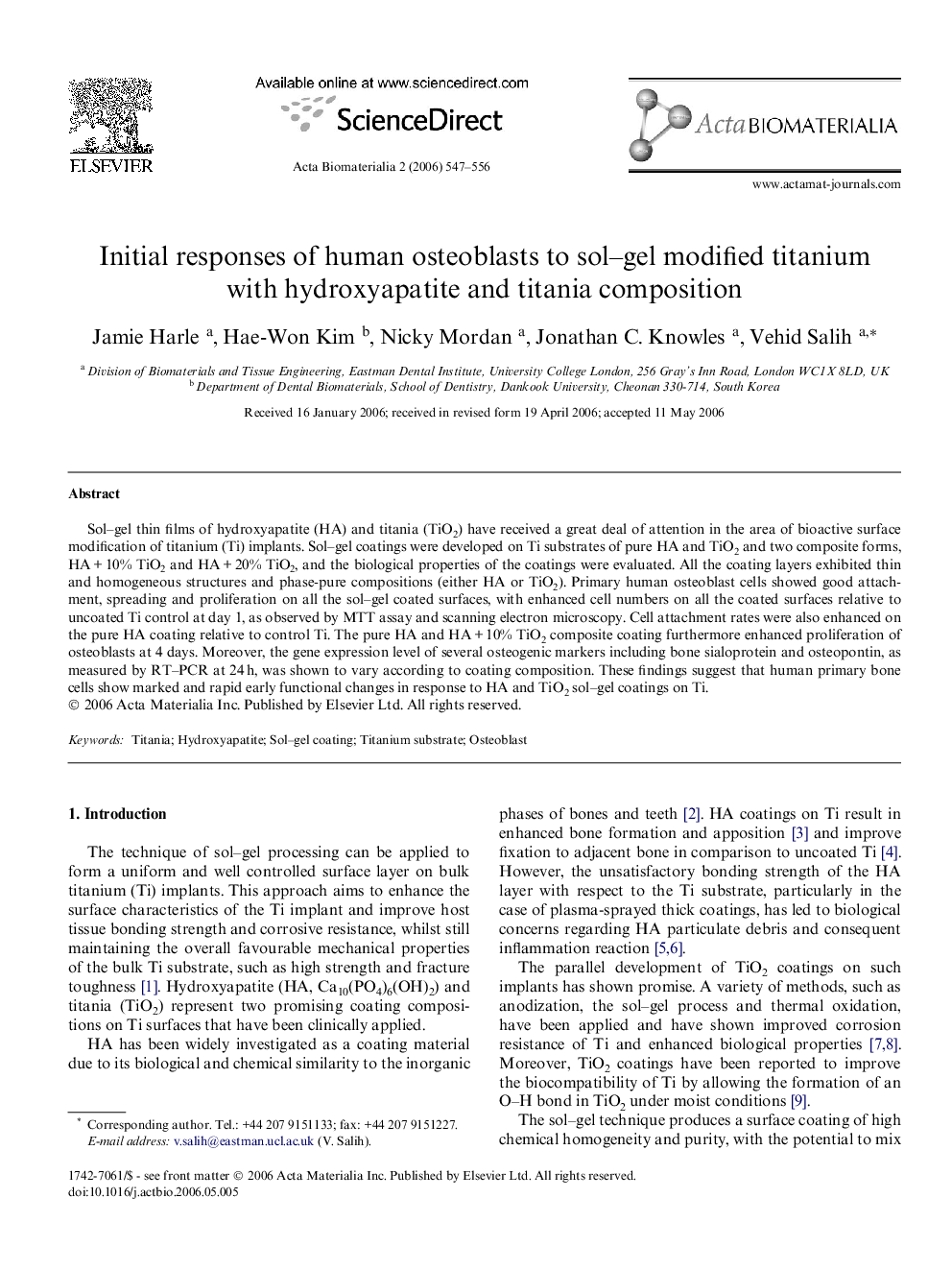| Article ID | Journal | Published Year | Pages | File Type |
|---|---|---|---|---|
| 2557 | Acta Biomaterialia | 2006 | 10 Pages |
Sol–gel thin films of hydroxyapatite (HA) and titania (TiO2) have received a great deal of attention in the area of bioactive surface modification of titanium (Ti) implants. Sol–gel coatings were developed on Ti substrates of pure HA and TiO2 and two composite forms, HA + 10% TiO2 and HA + 20% TiO2, and the biological properties of the coatings were evaluated. All the coating layers exhibited thin and homogeneous structures and phase-pure compositions (either HA or TiO2). Primary human osteoblast cells showed good attachment, spreading and proliferation on all the sol–gel coated surfaces, with enhanced cell numbers on all the coated surfaces relative to uncoated Ti control at day 1, as observed by MTT assay and scanning electron microscopy. Cell attachment rates were also enhanced on the pure HA coating relative to control Ti. The pure HA and HA + 10% TiO2 composite coating furthermore enhanced proliferation of osteoblasts at 4 days. Moreover, the gene expression level of several osteogenic markers including bone sialoprotein and osteopontin, as measured by RT–PCR at 24 h, was shown to vary according to coating composition. These findings suggest that human primary bone cells show marked and rapid early functional changes in response to HA and TiO2 sol–gel coatings on Ti.
